You can contact LEARNZ, part of CORE Education, at:
Postal Address:
PO Box 13 678,
Christchurch 8141,
New Zealand
Geohazards such as earthquakes and volcanoes would not happen if the Earth's crust was solid and did not move. Plate tectonics is a geological explanation of how the surface of the Earth moves.
The Earth is a spherical, rocky structure made up of several main layers.
Plate tectonics is an explanation of how the surface of the Earth moves. Continents are sitting on huge chunks of the Earth’s crust called tectonic plates. These tectonic plates continuously move, jostling each other like huge chunks of ice packed together in an ice floe.
Heat generated in the Earth’s core causes super-hot convection currents to circulate in the Earth’s mantle. The movement of heat within the mantle is the main cause of tectonic plate movement (sometimes called continental drift).
The Earth’s crust is quite thin compared with the other layers. The rocks of the crust act like a lid on a jar, keeping the mantle contained beneath the Earth’s surface.
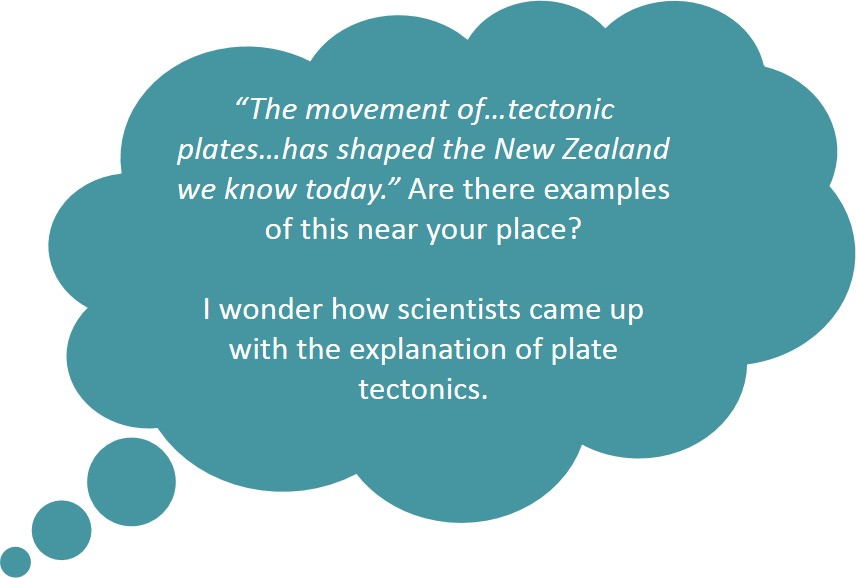
At the edge of the tectonic plates one of three processes can occur:
Divergent boundary
Also known as a spreading boundary, where two plates move apart allowing magma to rise from inside the Earth to fill in the gap. The two plates move away from each other like two conveyor belts moving in opposite directions. This can create rift valleys on land or ocean ridges on the seafloor (e.g. the Atlantic Ocean).
Convergent boundary
Where two plates are colliding. Different things will happen depending on what type of plates are colliding:
Transform boundary
A transform boundary occurs where two plates slide against each other in a shear movement. But rather than sliding smoothly, the plates build up tension then release the tension with a burst of movement. This movement is felt as an earthquake.
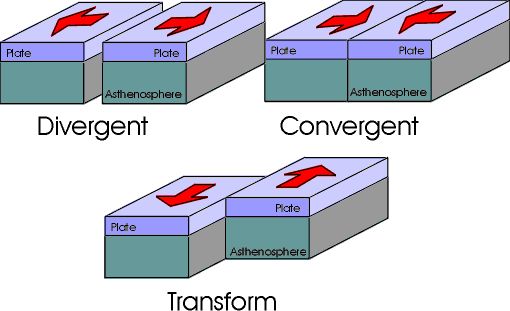
New Zealand is located on the edge of two tectonic plates, the Indo-Australian and the Pacific plates. This position makes New Zealand geologically active with frequent earthquakes, geothermal areas and volcanoes. The movement of these two tectonic plates forms the New Zealand landscape that we know and love.
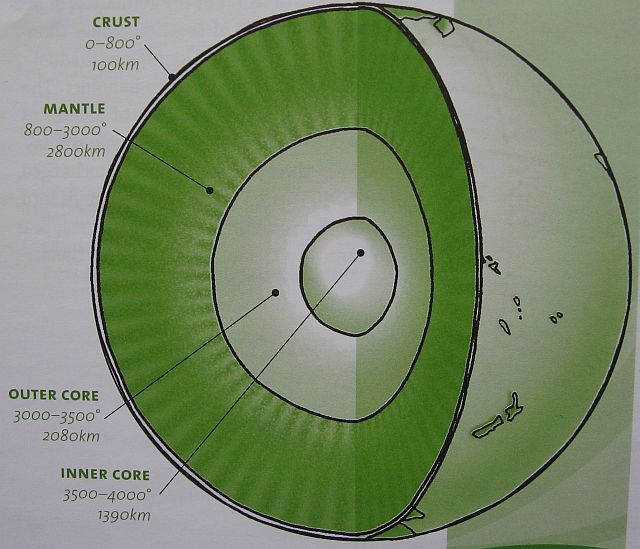
,Earth is made up of several main layers. Image: LEARNZ.
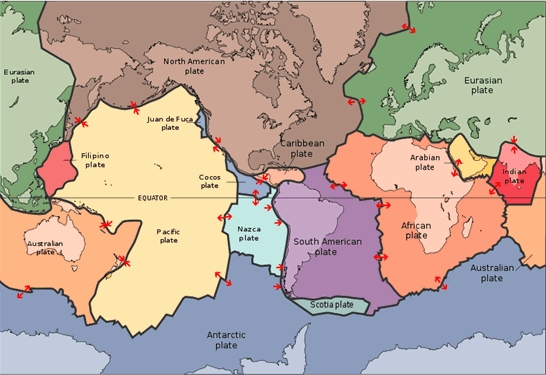
,Continents are sitting on huge chunks of the Earth’s crust called tectonic plates. Image: GNS Science.
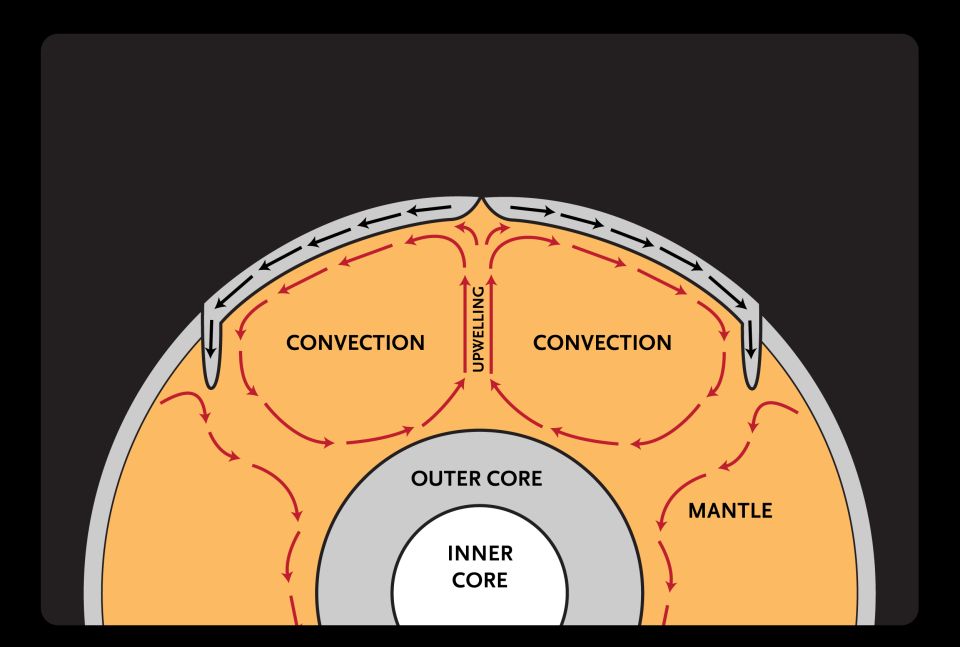
,Convection currents caused by heating in the Earth's mantle explain how the continents move. Image: Public Domain.
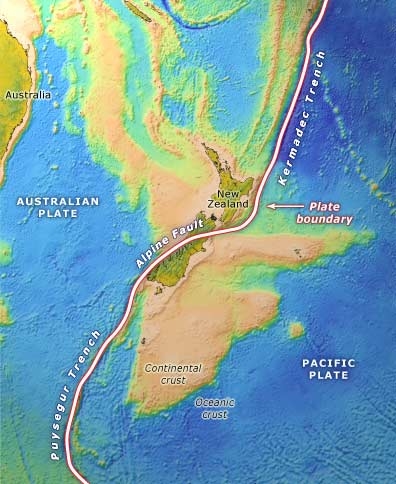
,New Zealand sits on the edge of two tectonic plates; the Indo Australian Plate and the Pacific Plate. How do you think this affects New Zealand? Image: LEARNZ.
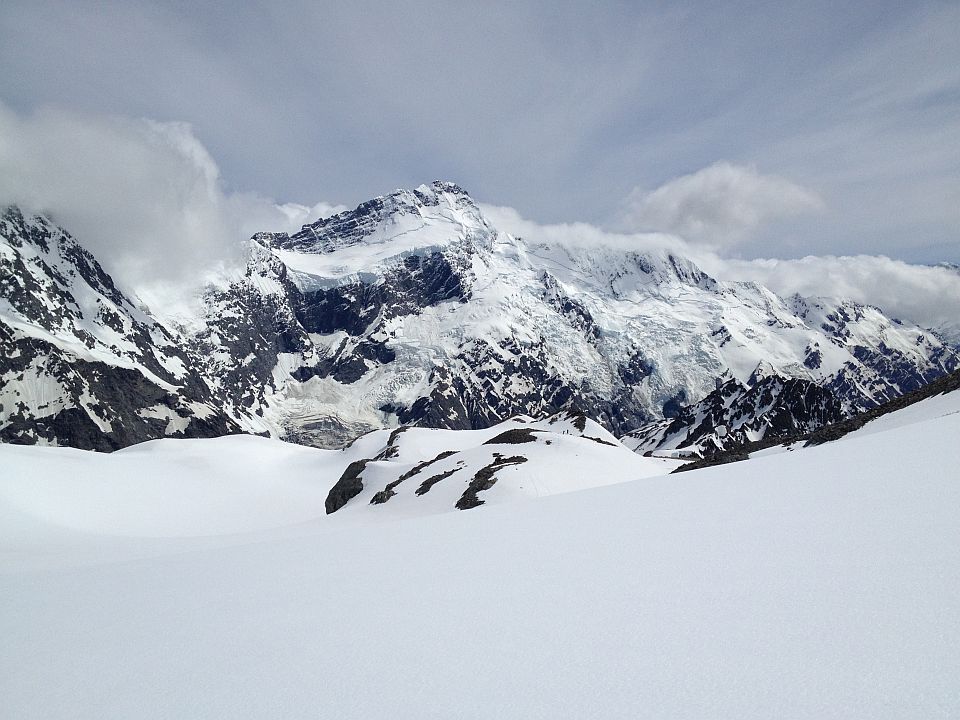
The Indo Australian Plate is like a bulldozer pushing at the weaker Pacific Plate causing it to rise up into the mountain range known as the Southern Alps. What else does this plate movement cause? Image: LEARNZ.
Watch the GNS Science animation (519k), showing the future shape and deformation of New Zealand if the plate movement measured between 1994-1998 were to continue unchanged.